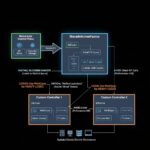
Building robust and scalable systems is an essential skill for any developer today. Distributed systems, in particular, play a crucial role in modern applications, handling massive data and user traffic. If you’re looking to strengthen your understanding of distributed systems and system design, this blog post is for you!
We’ve compiled a list of 10 essential articles covering a wide range of topics to help you gain a deeper knowledge:
1. Database Isolation Levels:
Understanding how data is accessed and modified concurrently in a database is paramount. This article delves into the different isolation levels offered by databases, ensuring data consistency and integrity in your applications.
2. MapReduce:
This powerful programming model simplifies processing large datasets across clusters of computers. Learn how MapReduce efficiently handles parallel processing tasks, breaking down complex problems into smaller, manageable chunks.
3. Leader Election Algorithms (Raft and Paxos):
Maintaining consistency in a distributed system requires a leader to coordinate actions. This article explores popular leader election algorithms like Raft and Paxos, ensuring a single, authoritative node guides decision-making within the system.
4. Content Delivery Networks (CDNs):
Delivering content quickly and reliably to users worldwide is crucial. This article explains how Content Delivery Networks (CDNs) work, geographically distributing content to optimize user experience and reduce latency.
5. Serving Video Content at Scale:
Providing smooth, high-quality video streaming requires specialized techniques. This article dives into optimizing video delivery for a flawless user experience, ensuring seamless playback even with high traffic volumes.
6. Server-Sent Events (SSE):
Push real-time updates to your users without constant polling. This article explores Server-Sent Events (SSE), a powerful technique for keeping your web applications dynamic and engaging, delivering real-time data updates to users as they occur.
7. How to Synchronize Distributed Machines:
Maintaining data consistency across multiple servers in a distributed system is essential. This article explores strategies for keeping your distributed systems in sync, ensuring all machines have the same data at the same time.
8. Latency, Throughput, and Bandwidth:
Grasping these core performance metrics is crucial for optimizing your application’s responsiveness and data transfer capabilities. This article explains latency, throughput, and bandwidth, helping you identify bottlenecks and fine-tune your system for optimal performance.
9. Database Replication Lag:
Data replication ensures high availability in your system but introduces a lag. This article explores how to manage replication lag and its impact on your application, ensuring data consistency while maintaining high availability.
10. Distributed Clocks:
Coordinating time across a network of machines is vital for consistent data and behavior in a distributed system. This article explores different approaches to distributed clock synchronization, ensuring all machines agree at the same time, even when physically separated.
Ready to dive deeper? This list provides a solid foundation for understanding distributed systems and system design. By diving deeper into these topics, you’ll be well-equipped to build high-performance, scalable systems that can handle the demands of today’s applications.
Happy learning!
Reference to the Article-X
Follow us for more Updates













